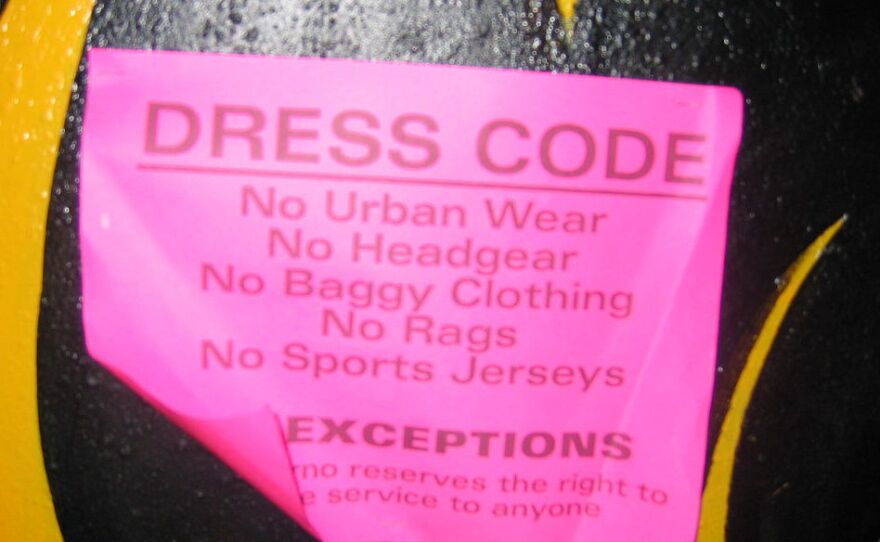

A Minneapolis nightspot called Bar Louie landed in the news after some local residents took issue with its new dress code.
No flat-billed hats. No long white T-shirts. No large chains. No sleeveless under shirts. No athletic apparel. No sports jerseys without collars. No excessively baggy clothing.
(Either Bar Louie's proprietors had some really ugly exchanges with Chingy back in 2003, or something else is going on.)
"What is excessively baggy clothing?" one woman complained to a local Fox affiliate. "You might as well say, 'No blacks allowed.' It's ridiculous."
The local news station said that the dress code was not in effect at a different Bar Louie location in Minnetonka, a suburb of Minneapolis. (Minnetonka is about 90 percent white.) Another Bar Louie location in Memphis caused a minor stir after it adopted a similar dress code last year.
Last month in Austin, Texas, a black college student complained that he was denied entrance to Kung Fu Saloon, a popular nightclub, after a bouncer told him that he was dressed "too ghetto." The student said that his white friend who was dressed similarly was allowed inside. Kung Fu Saloon's management said at the time that it was investigating "whether the comment was racially motivated."
These fights are nothing new, of course. Back in 1976, Neil Bezare won a landmark civil rights case — and $325 — after he sued a restaurant in La Verne, Ca., that turned him away for wearing a denim leisure suit with no tie. It was the first case in the state involving restaurants' rights to establish dress codes.
Dress codes are written loosely enough to give discretion to whoever happens to be manning the door, but they're also specific enough to signal that these nightspots aren't really trying to countenance a certain element. You probably wouldn't read "excessively baggy clothing" and think they were keeping out dudes who rock dad jeans or Steve Harvey suits. And Steve Haruch, a Code Switch contributor who writes for the Nashville Scene, told us on Twitter:
But just as the slipperiness of these dress codes both causes folks to take issue with how they're enforced, that same vagueness makes them hard to challenge. Another Twitter commenter told us that he tried to cut off the hood from his sweatshirt with scissors after he was barred entry from a nightclub that didn't allow hoodies.
(Those are good friends.)
Take this story from Lisa Wade, a professor who blogs at Sociological Images, about a visit to the University of Wisconsin. Wade said that the relatively well-off university students had long enjoyed a tense, wary relationship with the surrounding community. "There was less mingling between the 'town' and 'gown' than we might expect by random chance, and some businesses tried to attract the latter exclusively," she wrote.
She snapped a photo of the dress code at Brothers Bar, a local watering hole right by the campus. Skull-caps, sports jerseys and athletic wear, bandanas — all verboten.
An enterprising journalist sat outside Brothers Bar to see just how the dress code was enforced. Not "strictly," it turned out. The people who were turned away were overwhelmingly Black. Meanwhile, they let in students wearing UW sports jerseys and other Bucky the Badger-themed "athletic wear."
The thing about dress codes is that, as written, they are all subtext and context. They don't mean anything outside of the implications made by the people who craft them. They don't mean much outside of the inferences being made by the people who read them. Indeed, it would be hard to understand any individual prohibited item on these restrictions as signifying much of anything if you were just reading them in isolation.
What are "MC colors"?
What is "urban wear"?
It's impossible to say. That's both the pitfall and the point.
Copyright 2014 NPR. To see more, visit http://www.npr.org/





